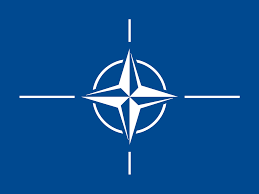
The proliferation of inexpensive, highly capable Unmanned Aerial Systems (UAS) has fundamentally altered the modern battlespace, creating a persistent and asymmetric threat to ground forces, critical infrastructure, and naval assets. The recent evolution from single-drone attacks to coordinated, autonomous swarms presents a complex challenge that can saturate and overwhelm traditional air defense systems. In response, defense planners and industry leaders are rapidly developing mobile, multi-layered counter-UAS (C-UAS) architectures designed not just to destroy individual drones, but to defeat the logic of a swarm attack itself. This represents a critical pivot from static, single-point defense to a dynamic, networked shield capable of protecting forces on the move.
This shift is a direct response to the escalating complexity of the UAS threat, which has evolved significantly over the past two decades. Initially, the primary concern was large, state-operated platforms like the MQ-1 Predator or MQ-9 Reaper, which were addressed by conventional air defense. However, the conflicts in Syria, Iraq, and Yemen demonstrated the lethal potential of commercially available drones modified by non-state actors for reconnaissance and payload delivery. More recently, the 2020 Nagorno-Karabakh conflict and the ongoing war in Ukraine have served as stark showcases for the decisive impact of both loitering munitions and coordinated drone strikes, highlighting the vulnerability of even advanced armored formations and air defense batteries that lack a dedicated, short-range C-UAS capability.
The Strategic Imperative: Mobility and Cost-Effectiveness
A core driver behind the development of mobile C-UAS architectures is the need to protect maneuver forces. Static defenses, while essential for fixed sites like airbases and command centers, leave convoys, armored columns, and dismounted infantry exposed. The modern battlefield demands freedom of movement, which is severely compromised if units can be persistently tracked and targeted by low-cost aerial threats. A mobile C-UAS system, integrated onto platforms like the Stryker, JLTV, or equivalent armored vehicles, provides a protective bubble that moves with the force, enabling combined arms maneuver under a contested sky.
Furthermore, the strategic calculus is heavily influenced by the cost-exchange ratio. Utilizing a multi-million-dollar missile, such as a Patriot or Stinger, to intercept a drone that may cost only a few thousand dollars is economically unsustainable in a high-intensity conflict. Swarm attacks are designed to exploit this very imbalance, depleting a defender’s limited and expensive interceptors. An effective C-UAS architecture must therefore incorporate a range of effectors, prioritizing low-cost-per-shot solutions for the high-volume threat. This economic reality is accelerating investment in directed energy weapons and advanced gun systems as primary layers of defense.
Anatomy of a Layered C-UAS Architecture
Modern C-UAS solutions are not a single piece of equipment but an integrated system-of-systems, often described through a ‘detect, track, identify, defeat’ framework. The key is layering multiple capabilities to create redundancy and resilience.
Detection and Tracking: The first layer involves a suite of sensors to detect incoming threats. This typically includes compact radar systems optimized for small, low-flying targets, electro-optical and infrared (EO/IR) cameras for visual confirmation, and passive radio frequency (RF) detectors that can identify drone command links. AI-powered software is crucial for fusing this sensor data, filtering out clutter (like birds), and tracking multiple targets simultaneously.
Defeat Mechanisms: Once a threat is identified, the architecture provides a range of options.
Kinetic effectors include cannon systems firing programmable airburst munitions and small, specialized missiles.
Soft-kill options involve RF jammers that can sever the drone’s connection to its operator or disrupt its GPS navigation. The most promising frontier is
Directed Energy (DE), which includes both High-Energy Lasers (HEL) that can incinerate or disable a drone’s electronics and High-Power Microwaves (HPM) that can disrupt multiple systems over a wide area. DE weapons offer the promise of a nearly unlimited magazine and an extremely low cost-per-shot, making them an ideal solution for the swarm problem.
Future Trajectories and Key Actors
The technological arms race between UAS and C-UAS is set to intensify. Future drone swarms will likely feature greater autonomy, AI-driven collaborative behaviors, and enhanced electronic warfare capabilities, making them harder to detect and defeat. In response, C-UAS architectures will become more networked and automated, with AI-driven battle management systems making engagement decisions at machine speed to counter the sheer volume of threats.
Key actors in this domain include the United States, particularly the U.S. Army’s Joint Counter-Small Unmanned Aircraft Systems Office (JCO), which is working to standardize solutions across the services. Defense primes like Raytheon, Northrop Grumman, and BAE Systems are developing integrated platforms, while a host of innovative startups such as Anduril and Epirus are pioneering advanced software and directed energy solutions. Nations like Israel, the UK, and Turkey are also at the forefront of developing and deploying C-UAS technologies, driven by direct operational experience.
In conclusion, the rise of the drone swarm has forced a fundamental rethink of air defense. The development of mobile, multi-layered, and cost-effective C-UAS architectures is no longer a niche capability but a strategic necessity. As this technology matures and proliferates, it will be a defining factor in determining which militaries can maintain tactical overmatch and operational freedom on the battlefields of the future.
Source


